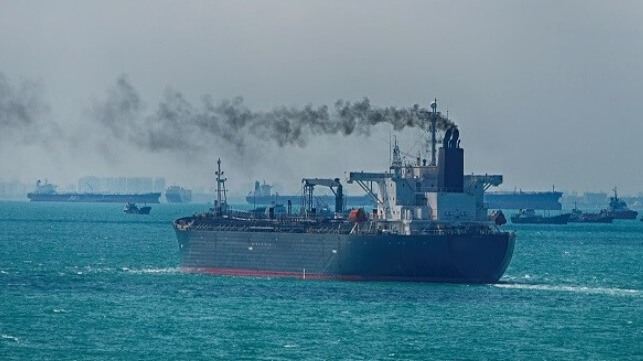ICS Proposes $20-40 Carbon Levy With No Automatic Increases

The International Chamber of Shipping has formulated a revised proposal for an IMO carbon emissions fund. As with earlier proposals, it would see two-way financial flows going in and out of one fund - carbon-emitting shipowners would pay money in, while low-carbon shipowners would take money out - but it incorporates new details.
Conceptually, the idea is a variation on ICS' previous call for a tax and subsidy system, which would raise the cost of conventional bunker fuel and lower the cost of expensive green fuel. This would have the effect of leveling the playing field and making green bunkering competitive on the global market. Zero-carbon fuels are expected to be about four times as expensive as conventional fossil bunker fuel, and most stakeholders predict that a tax and subsidy system will be required to achieve commercial scale.
The new ICS plan draws on an earlier flat-rate "levy-based" proposal endorsed by Japan and by EU member states, but substitutes a lower proposed tax value and adds new details on transparency and accountability.
The proposal calls for a flat-rate levy in the range of $20-40 per tonne of bunker fuel, far less than other independent proposals. The price is calculated to raise up to $5-10 billion per year, enough to subsidize zero-carbon fuels for 5-10 percent of global shipping, but not more. To increase the levy rate further to align with increasing climate targets, IMO MEPC would have to debate and revise the regulation again at each step.
The values are at the lower end of the spectrum. The Marshall Islands has long called for $300 per tonne, former Maersk CEO Soren Skou has called for $450 per tonne, and Trafigura has advocated for as much as $900 per tonne. (Maersk has parted ways with ICS' board over climate differences.)
The Japanese levy plan - the blueprint for the new ICS plan - called for a worldwide tax starting at about $175 per tonne of bunker fuel from 2025, ratcheting up to about $2,000 per tonne by 2040. (Note: These figures have been converted to dollars per tonne of bunker fuel for consistency.)
ICS' most recent study assesses that carbon fees of up to $300 per tonne of bunker fuel would have little effect on national economies. This range is comparable to the price spread between HFO and VLSFO, which are both competitive fuels in the open market.
The ICS proposal is co-sponsored by Liberia and the Bahamas, two of the largest flag state administrations.
In a statement, ICS Secretary General Guy Platten called the mechanism "equitable, transparent and simple." He called for rapid action on a plan to hit the first IMO targets for 2030 - now just six years away - as a necessary stepping stone to reaching the net-zero target set for 2050.

that matters most
Get the latest maritime news delivered to your inbox daily.
"A global GHG pricing mechanism for shipping urgently needs to be agreed on next year," he said. "The groundwork has been done and the regulatory architecture has been carefully laid out. All that is needed is political will from governments to implement this fit-for-purpose solution quickly and effectively."
This is not the first time that ICS has floated a carbon plan. The first ICS carbon proposal called for a $2 per tonne "research" fee over an initial ten-year period. It was panned by environmentalists, who believed it was too small to be effective. It was withdrawn after it twice failed to gain enough support from IMO members.
